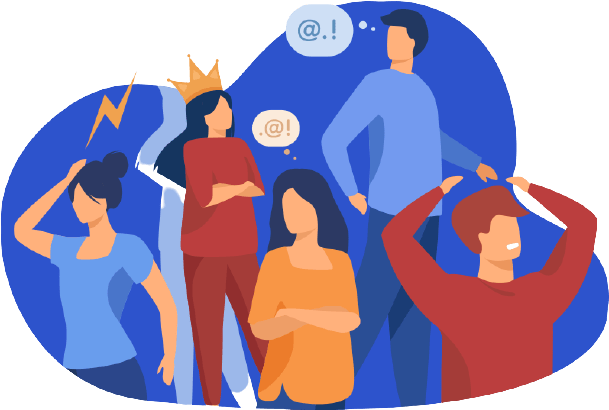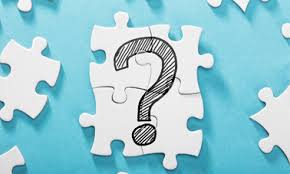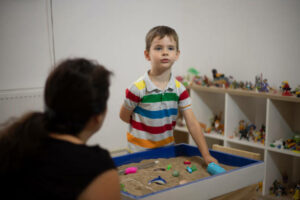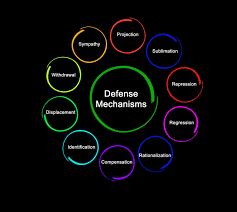Psychology is a field of study that is very interesting. It has been around for a long time and it is one of the more popular fields to date. There are more people studying psychology now than ever before. In psychology, there are many different theories that have been developed over time by various psychologists from all over the world. One such theory was developed by Sigmund Freud, who proposed that humans’ psychological development is determined by three factors: our biological make-up (our genes), our childhood experiences and interactions with others (socialization), and finally, how we use objects as a defense mechanism against anxiety or fear (object relations).
Contents
What Are Object Relations?
Object relations is a theory that people have about how they relate to the things around them. It’s based on your own memories and experiences. If you have a good memory of your childhood blanket, you might feel attached to or drawn to blankets when you are an adult. If you had a bad experience with something (like a knife), then as an adult, you might be scared of things like knives.
How Do Object Relations Influence My Life?
Your object relations theory affects how you interact with the world around you. It can influence your choices in relationships, career, and lifestyle. For example, if you have a good opinion of yourself, you are likely to choose better relationships and be more confident in your abilities. If you have a bad view of yourself, you might struggle to feel good about yourself and be more likely to be in a relationship where someone is mean. Your object relations theory can also dictate what kind of objects appeal to you and why. People who have a good relationship with themselves might surround themselves with things that are pleasing to them, like pictures or furniture. People who struggle with self-esteem might surround themselves with things that make them feel good. For example, they might eat a lot of food because it makes them feel better about themselves.
Not only do object relations influence how we relate to the world around us and why we choose certain objects or relationships; it also impacts our psychological development as well. Object relations theory states that infants start out in a relationship with their mother where they rely on her for everything. They need love, comfort, etc. This is a good example of how an infant can use a blanket. The infant needs the blanket for warmth, protection from strangers, and to put toys on when playing by themselves.
Basic Concepts In Object Relations Theory
Object relations theory is a psychological model that accounts for personality development in early childhood. Its main focus is on the importance of people’s relationships with others, especially their parents, as they grow up and develop. Object relations theorists believe there are three major factors that influence this. In addition to these basic concepts, another important aspect of this theory is that humans use objects as a defense against being afraid. This article will provide a brief overview of each concept outlined above.
Biological Drives
People do things because they want to feel good and happy. This is called the “pleasure principle.” Some people think that a framework called the pleasure principle can help them understand why people do things. In other words, people have a strong desire to seek pleasure and avoid pain. One of Freud’s theories is that babies want their mothers when they are born. Babies look for her after they are born. They can get stressed or anxious if she is not there when they need attention, like when they are hungry.
Attachment
Scientists like Konrad Lorenz and Niko Tinbergen found that newborn animals get attached to their mothers. That is how they get the food from the mother. When a baby bird is taken away from its mother, it will produce high levels of the stress hormone cortisol. This causes the baby to lose weight and makes it harder for them to survive.
Objects as Symbols
In addition to being used for physical needs, objects can also be symbols. Some cultures put their wedding rings on the fourth finger. This is because that finger is connected to the heart. The ring doesn’t actually do anything to help the heart, but it’s still a symbol of love. Similarly, when people give someone a gift they might choose something that has special meaning to them. This could be something like an heirloom or a present they received themselves when they were younger.
Oedipus Complex
The Oedipus complex is a theory first proposed by Sigmund Freud. It’s based on the story of Oedipus Rex, where Oedipus kills his father and marries his mother. Freud believed that boys go through a stage during development where they want to kill their fathers and have sex with their mothers. This isn’t actually something that most boys do, but Freud thought it was an important part of development. He thought it happened because children are naturally jealous of their parents’ love for each other.
Defense Mechanisms
People use defense mechanisms to protect themselves from anxiety or fear. One common defense mechanism is denial. Denial happens when people refuse to believe that bad has happened or is happening to them is because of their parents.
Techniques
Identification
It is where people model their own behavior based on someone they admire. This happens when we ‘identify’ with the positive aspects of another person and try to be like them. For example, if a parent has good taste in clothes and is admired by their child, the child might copy his or her clothing choices as an adult.
Humans can also identify with objects that aren’t alive too! For instance, some people collect certain things because it makes them feel better about themselves. It’s all about how people (or objects) feel and relate to others during childhood development. The mind connects everything back to an individual, even though there are many other things around.
Projection
It is where people put their own thoughts and feelings onto other people. So, for example, someone might think that their partner doesn’t love them anymore because they’re always tired at the end of the day. In reality, their partner might just be really exhausted but the person projecting will still believe that it’s because of them. This happens a lot in relationships!
Reaction Formation
It is where people do the opposite of what they really want to do. People might try to be polite and obedient when they want to scream and yell at their parents. This happens because the person doesn’t feel safe showing their true feelings. They’re afraid that if they show anger or frustration it will make things worse.
Regression
It is when people go back to a previous stage in their development. For example, a teenage girl might start wearing more makeup and skirts after she’s had a hard time at school. She’s regressing back to a time when she felt safer and more comfortable.
Goals Of Object Relations Therapy
The goal of object relations therapy is to help people understand their relationships with others. This can be done by exploring the different defense mechanisms that they use. Therapists will also try to identify any objects or symbols that are important to the patient. Finally, therapists will work to help patients develop healthy relationships with both objects and people.
Who Practices Objects Relations?
Object relations therapy is practiced by therapists who are trained in psychoanalysis. It’s a type of therapy that takes a long time to learn and requires a lot of training. This is because it’s based on the idea that people’s early childhood experiences affect their adult relationships.
Limitations Of Object Relations Therapy
Object relations therapy is a good way to help people understand their feelings and relationships. However, it’s not always easy for therapists to know what patients are thinking or feeling during sessions! Sometimes they have to rely on what the patient tells them about their childhood experiences instead of being able to read their mind.
Conclusion
Object relations psychology explores how our early relationships with objects affect our adult lives. It can be used in psychotherapy when patients try to understand themselves better by exploring why they relate things back to specific times from their pasts. The goal of object relations therapy is to help patients develop healthy relationships with themselves and others. Although it can be helpful, it’s not perfect and has limitations.
Object relations psychology explores how our early relationships with objects affect our adult lives. It helps you understand yourself by talking about things that happened in the past. The goal of object relations therapy is to help patients develop healthy relationships with themselves and others. Although it can be helpful, it’s not perfect and has limitations. For example, therapists may not always be able to know what a patient is thinking or feeling during sessions. Additionally, object relations therapy takes a long time to learn and requires a lot of training. Despite its shortcomings, however, object relations therapy remains an important tool for helping people understand their relationships with others.
If you are looking for affordable Online Counseling MantraCare can help: Book a trial therapy session











